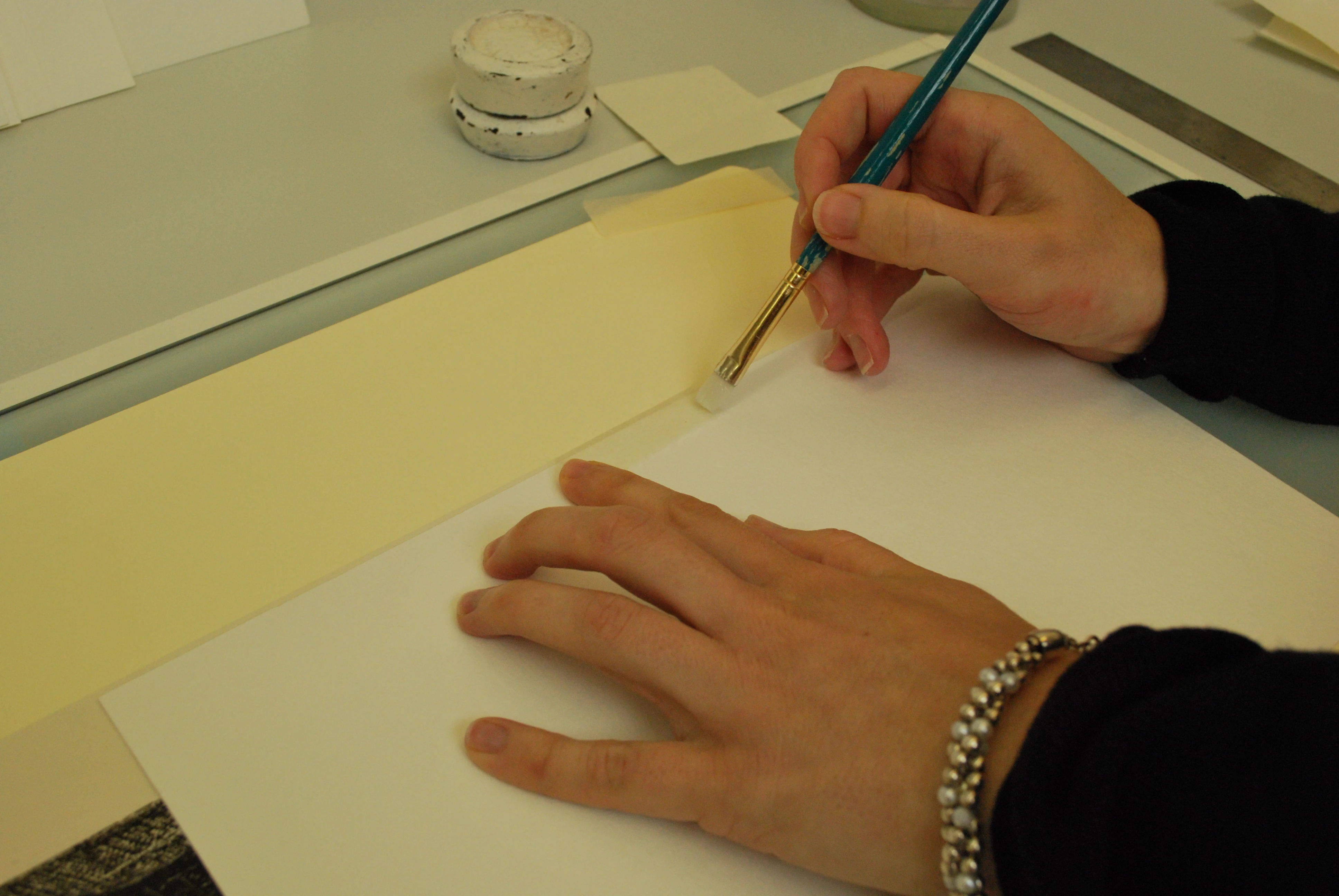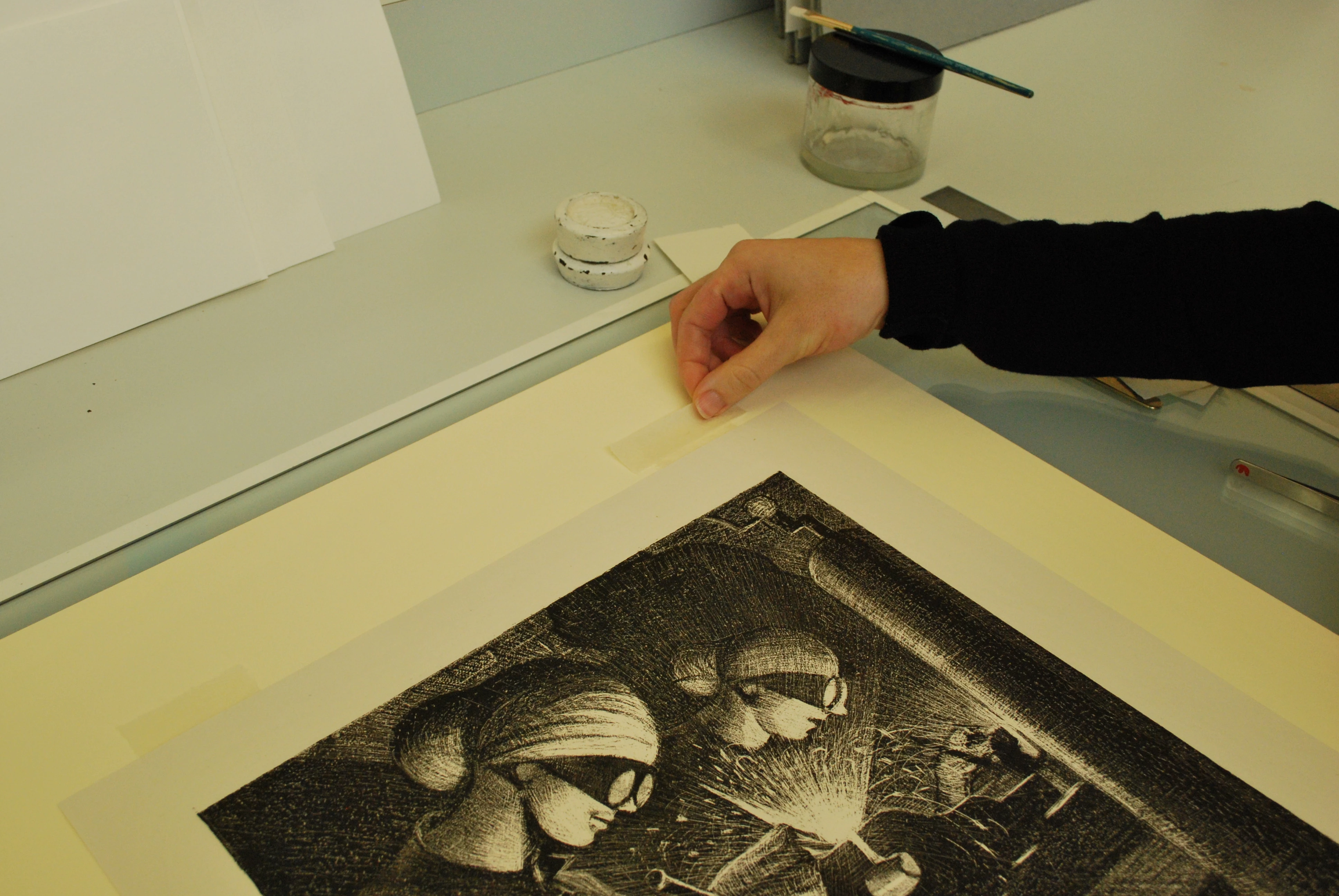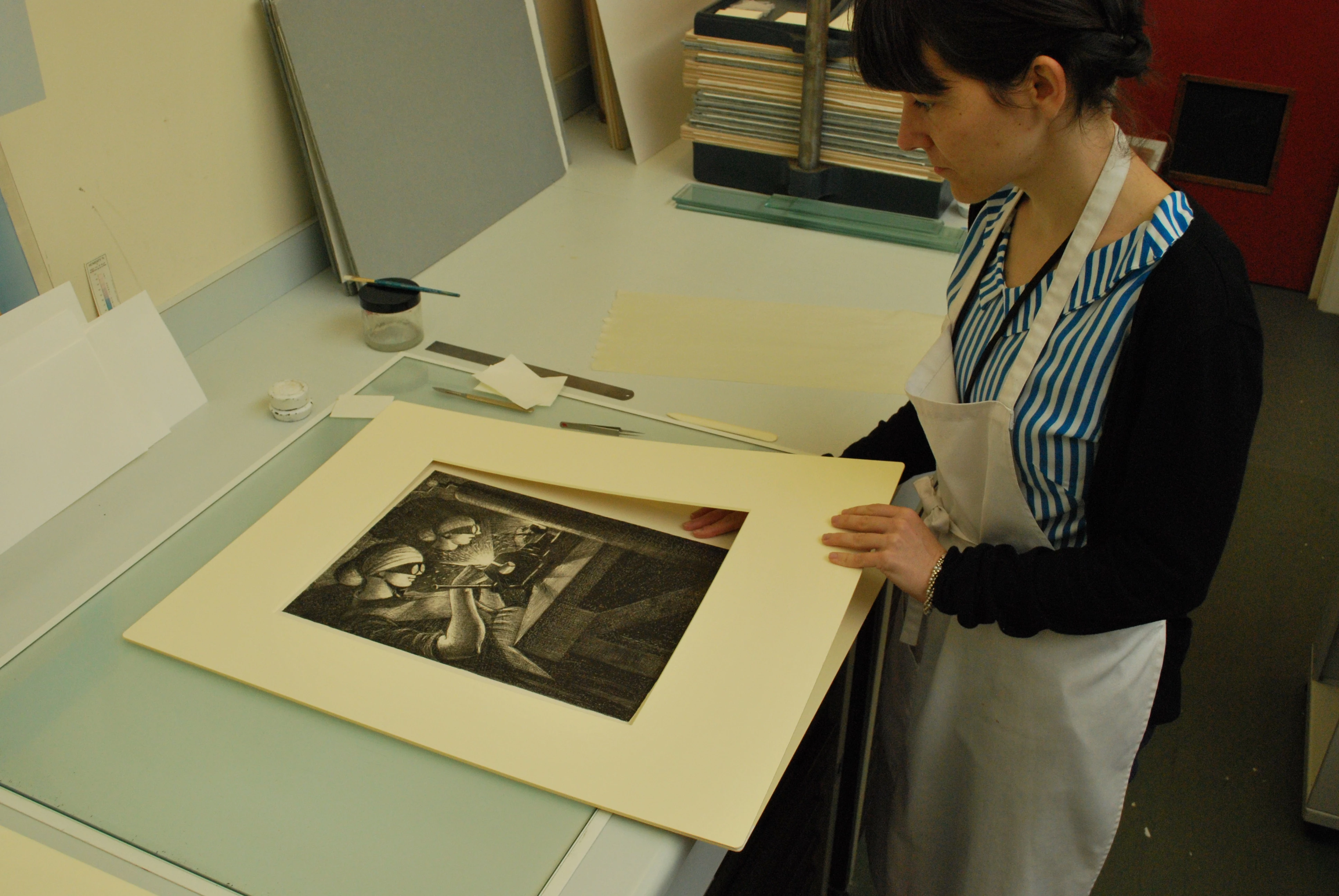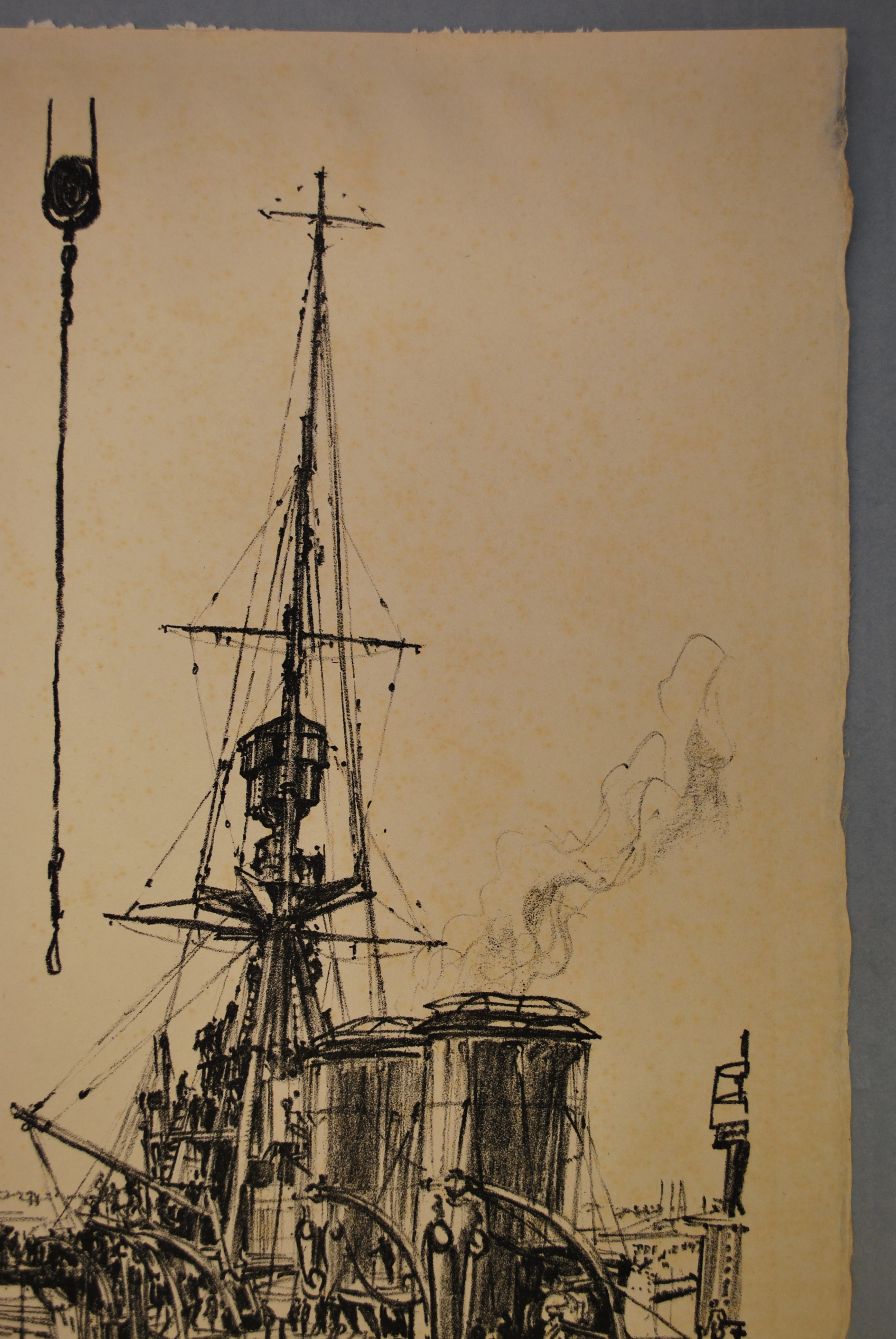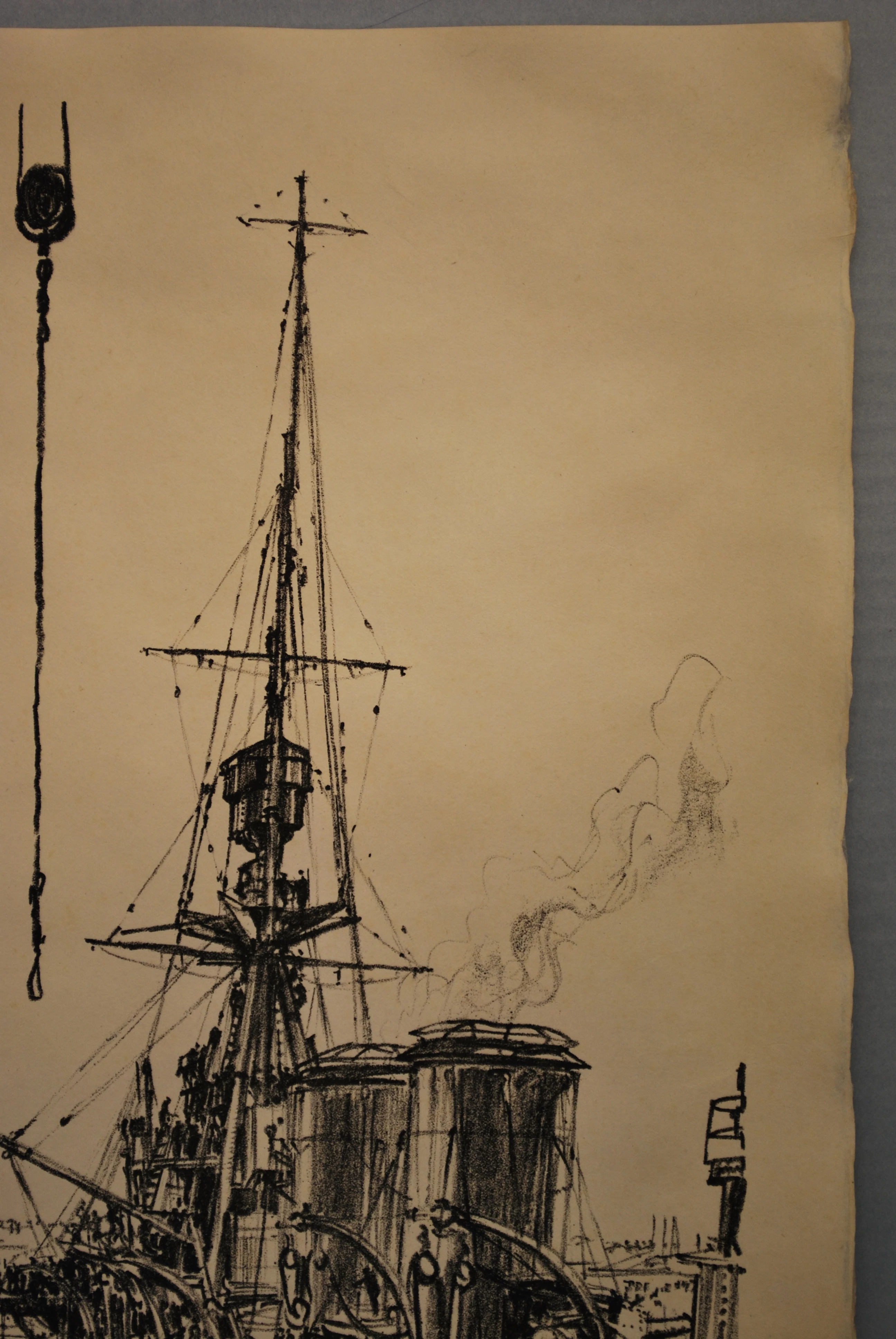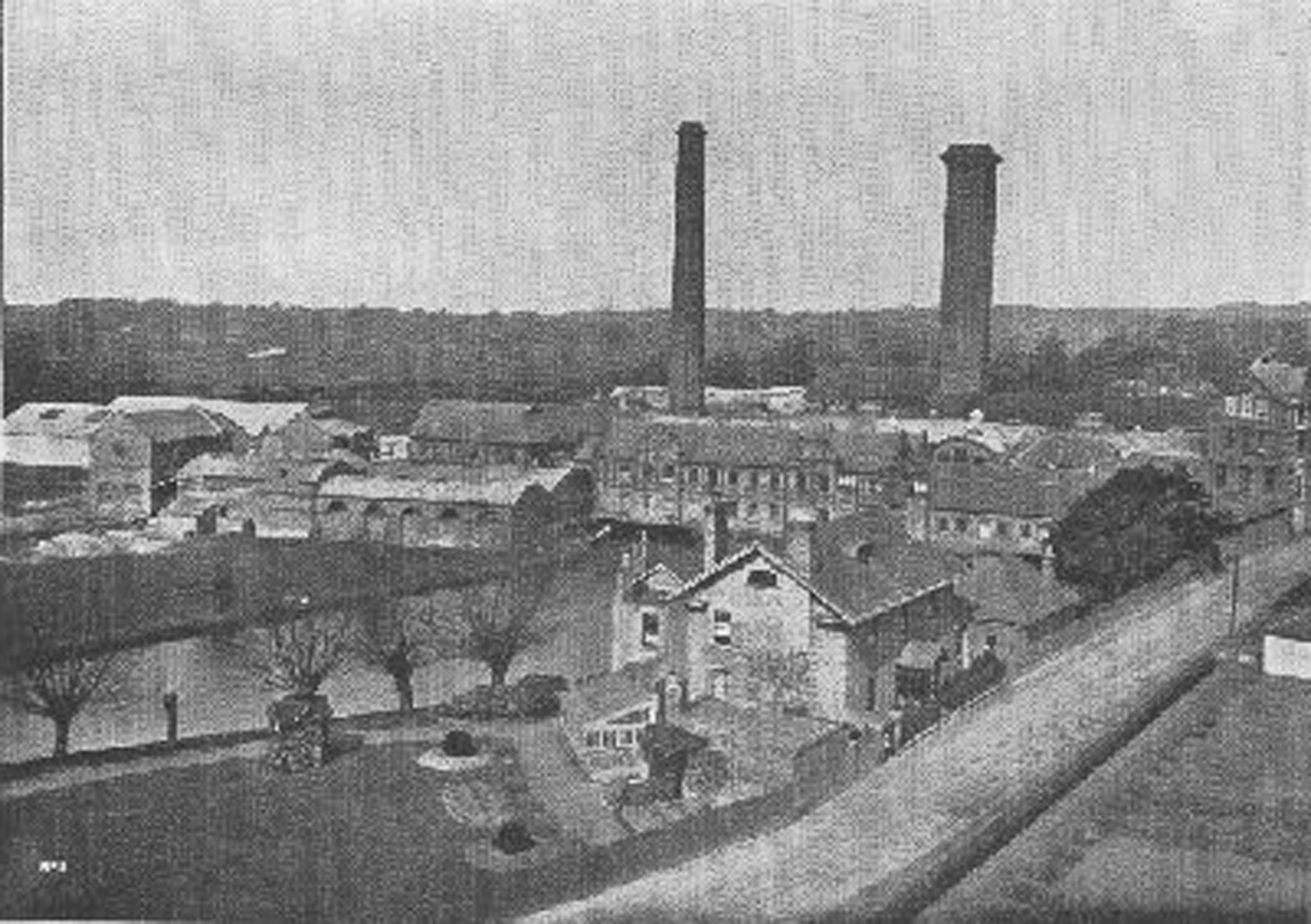TIME FOR PUTTING THE PRINTS IN MOUNTS!
, 12 June 2014
Here we are again with more news about the lithograph prints conservation process. Now is time for mounting each print in its own conservation mount to be ready for the exhibition opening 2nd August in gallery 18 at the National Museum Cardiff.
Preparing the mounts where the prints will be housed for the next 100 years hopefully! The mounts are cut to the museum standard size, using 100% cotton alkaline buffered museum board (the most expensive available – but the highest quality). The back board is hinged to the mount using water based adhesive tape.
In the following photos you will be able to see how I attach the print to the backing of the mount. First of all, we attached the hinge to the back of the print on the top edge. The hinge is made with Japanese tissue. (Second Photo)
Then, in third photo I am applying an adhesive over the surface of the hinge. This then folds back over and stick to the back board of the mount.
To reinforce the hinge we will glue another hinge over the top, creating a T hinge. This then allows the print to hang within the mount.
After one week making mounts for the prints we have already done 30 mounts.
Another 36 more to do and just 7 weeks to go… But we still need to make the frames and put them in…


